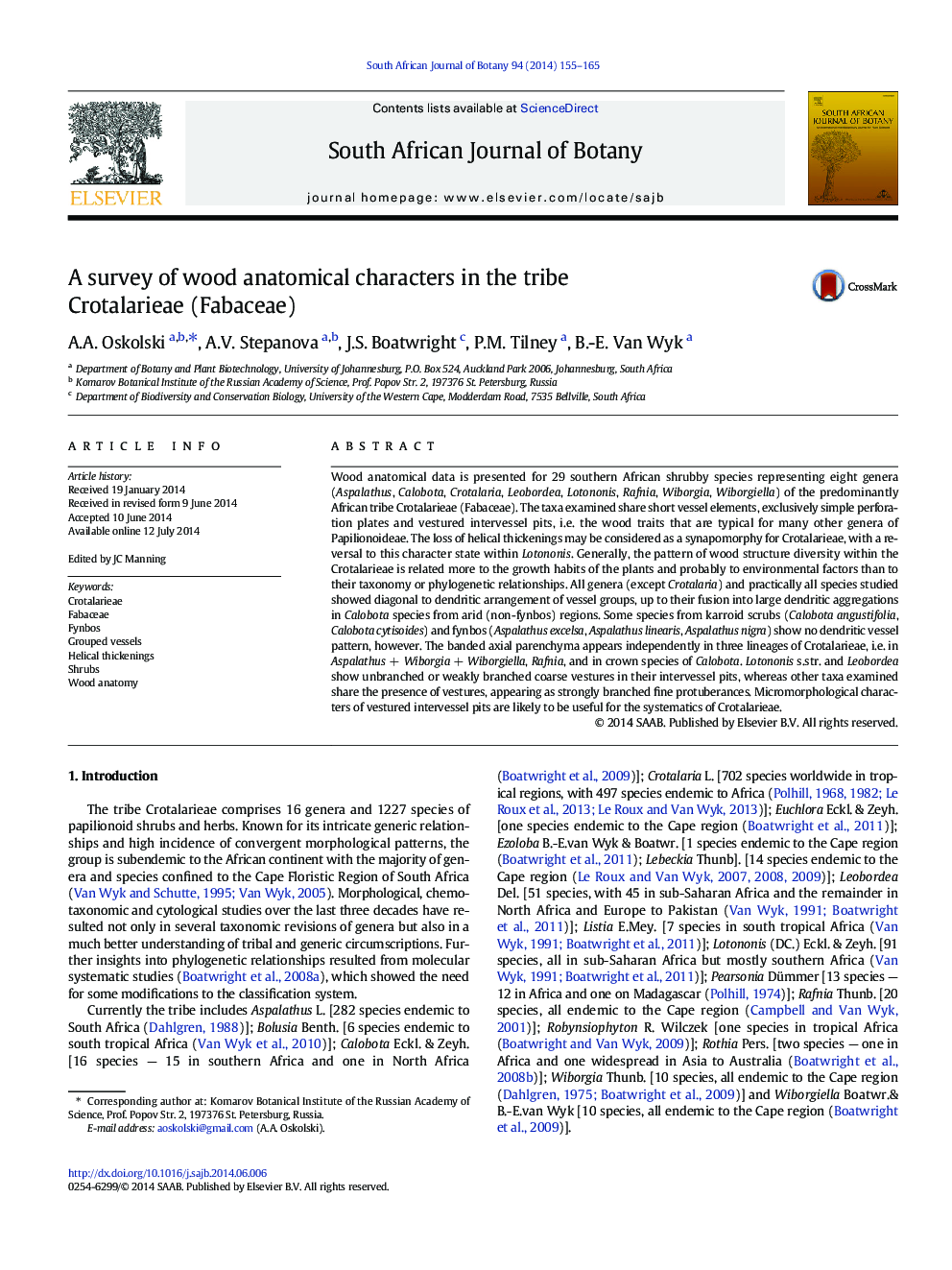| کد مقاله | کد نشریه | سال انتشار | مقاله انگلیسی | نسخه تمام متن |
|---|---|---|---|---|
| 4520672 | 1625164 | 2014 | 11 صفحه PDF | دانلود رایگان |

• We examine wood structure for 8 genera of the tribe Crotalarieae (Fabaceae).
• The loss of helical thickenings on vessel walls is a synapomorphy for Crotalarieae.
• The banded axial parenchyma appears independently in three lineages of Crotalarieae.
• Micromorphology of vestured intervessel pits is of systematic value for Crotalarieae.
Wood anatomical data is presented for 29 southern African shrubby species representing eight genera (Aspalathus, Calobota, Crotalaria, Leobordea, Lotononis, Rafnia, Wiborgia, Wiborgiella) of the predominantly African tribe Crotalarieae (Fabaceae). The taxa examined share short vessel elements, exclusively simple perforation plates and vestured intervessel pits, i.e. the wood traits that are typical for many other genera of Papilionoideae. The loss of helical thickenings may be considered as a synapomorphy for Crotalarieae, with a reversal to this character state within Lotononis. Generally, the pattern of wood structure diversity within the Crotalarieae is related more to the growth habits of the plants and probably to environmental factors than to their taxonomy or phylogenetic relationships. All genera (except Crotalaria) and practically all species studied showed diagonal to dendritic arrangement of vessel groups, up to their fusion into large dendritic aggregations in Calobota species from arid (non-fynbos) regions. Some species from karroid scrubs (Calobota angustifolia, Calobota cytisoides) and fynbos (Aspalathus excelsa, Aspalathus linearis, Aspalathus nigra) show no dendritic vessel pattern, however. The banded axial parenchyma appears independently in three lineages of Crotalarieae, i.e. in Aspalathus + Wiborgia + Wiborgiella, Rafnia, and in crown species of Calobota. Lotononis s.str. and Leobordea show unbranched or weakly branched coarse vestures in their intervessel pits, whereas other taxa examined share the presence of vestures, appearing as strongly branched fine protuberances. Micromorphological characters of vestured intervessel pits are likely to be useful for the systematics of Crotalarieae.
Journal: South African Journal of Botany - Volume 94, September 2014, Pages 155–165